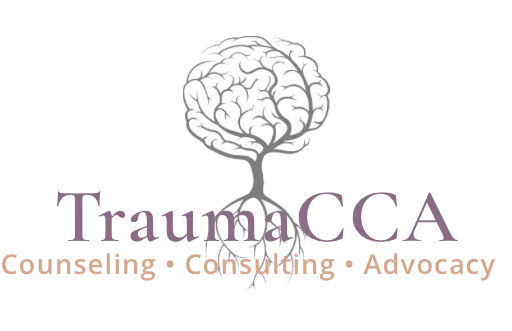What is EMDR Therapy? 6 Things To Know
Contents
- 1 When You Don’t Know What’s Wrong—Only That You’re Tired of Hurting
- 1.1 What is EMDR Therapy?
- 1.2 Understanding Trauma: Why It Can Show Up in So Many Ways
- 1.3 What Is EMDR Therapy? Healing Without Reliving
- 1.4 How EMDR Works: When the Body Finally Gets to Exhale
- 1.5 What to Expect in EMDR Therapy
- 1.6 Who Can Benefit from EMDR?
- 1.7 Is EMDR Right for You?
- 1.8 Why Choose Us for Your EMDR?
- 1.9 Reclaiming Your Narrative
- 1.10 Free 15-Minute Consultation
When You Don’t Know What’s Wrong—Only That You’re Tired of Hurting
What is EMDR Therapy?
Sometimes, trauma doesn’t look like what you think it does. It doesn’t always announce itself as flashbacks or panic attacks. Sometimes, it looks like anxiety that won’t let you rest. Sometimes, it looks like perfectionism, people-pleasing, or overworking. Sometimes, it’s a deep, quiet sadness that lingers no matter how good life looks on paper. And sometimes, you don’t remember anything that should explain why you feel this way.
You just know something inside won’t settle.
Maybe you’ve said things like:
> “I don’t even know why I feel like this.”
> “My childhood wasn’t that bad.”
> “Other people have it worse.”
> “I should be over it by now.”
But trauma isn’t about comparison. It’s about what your body and brain went through when something overwhelming, unsafe, or invalidating happened—and how they had to adapt to survive it.
Eye Movement Desensitization and Reprocessing (EMDR) therapy is a trauma-informed, evidence-based process that helps the body and mind reconnect, reprocess, and finally release what’s been held for too long.
Francine Shapiro, the creator of EMDR, once wrote, “The past affects the present even without our being aware of it.” For so many people, this is the reality they live in every day. EMDR was designed precisely for this—helping the mind process unhealed experiences so they no longer control your emotions or reactions. Rather than retelling your trauma in detail, EMDR uses bilateral stimulation to guide the brain into a calmer, more integrative way of holding what happened. The goal is not to erase your memories, but as Shapiro also said, “to transform them.” Over time, memories that once carried fear or shame begin to soften, losing their ability to hijack your nervous system.
You don’t have to remember everything to heal. You don’t have to have a “big story.” You just have to notice that you’re ready for something to change.
Understanding Trauma: Why It Can Show Up in So Many Ways
Trauma isn’t just what happened—it’s what stayed in your body when you didn’t have the tools, safety, or support to process it.
And because every nervous system is different, trauma can show up in endless ways. It can look like:
Anxiety or constant vigilance: Always waiting for something bad to happen.
Depression or numbness: Feeling disconnected, flat, or shut down.
Overachievement: Trying to earn safety, love, or worth through performance.
Physical symptoms: Chronic pain, fatigue, digestive issues, headaches, tension.
Addictions or coping behaviors: Overeating, undereating, scrolling, substances, control.
Memory gaps: Entire periods of your life that feel foggy or unreal.
Identity confusion: Not knowing who you are without chaos or caregiving.
Spiritual disconnection: Feeling abandoned by God, faith, or meaning itself.
And those are only examples. Trauma can manifest in a thousand ways—many that don’t fit traditional definitions or diagnostic boxes.
What matters isn’t the label. What matters is how it feels to live inside your body and mind each day.
If something in you feels stuck, fragmented, or out of sync—there’s a reason. EMDR helps you uncover it without forcing memory or retraumatization.
What Is EMDR Therapy? Healing Without Reliving
EMDR is short for Eye Movement Desensitization and Reprocessing. Developed by Dr. Francine Shapiro in the late 1980s, EMDR is one of the most researched and effective treatments for trauma and distressing experiences.
Unlike traditional talk therapy, EMDR doesn’t rely on storytelling. You don’t have to explain everything, or even remember everything, for healing to occur. EMDR helps your brain and body complete the processing that trauma once interrupted—safely, gently, and without needing to relive the pain.
In EMDR, you and your therapist will:
1. Identify a target memory or feeling that causes distress—or sometimes, just start with the physical or emotional patterns you notice.
2. Engage in bilateral stimulation, typically through guided eye movements, tapping, or tones that alternate left to right.
3. Notice what arises—thoughts, feelings, sensations—without judgment.
4. Allow the brain to reprocess naturally. EMDR activates your mind’s innate ability to heal by integrating fragmented memories into a cohesive whole.
5. Install new, empowering beliefs, such as “I am safe now” or “I did the best I could.”
In simple terms: EMDR helps your brain file old pain into the past, so it stops invading your present.
How EMDR Works: When the Body Finally Gets to Exhale
Trauma lives not just in the mind, but in the nervous system.
It lives in your muscles that won’t unclench, your heart that races for no reason, your sleep that never feels restful.
When your body senses danger, it mobilizes energy for survival—fight, flight, or freeze. But if that energy has no safe place to go, it gets trapped. EMDR creates the conditions for your system to complete the loop.
While science continues to explore the exact mechanisms behind EMDR, several theories help explain why it works so effectively:
Adaptive Information Processing (AIP): The brain naturally wants to heal and integrate experiences; EMDR simply gives it the right conditions to do so.
Working Memory Theory: The bilateral stimulation taxes the brain just enough to reduce emotional overwhelm, helping the memory lose its charge.
Neurobiological Reset: Research shows EMDR can shift brain activity in regions that govern emotion regulation, safety perception, and memory integration.
REM Sleep Parallel: EMDR mimics the eye movements of REM sleep, when the brain naturally processes emotional material.
What clients often describe isn’t “forgetting” the trauma—it’s remembering it differently.
It’s when the story that once hijacked their emotions becomes just a story.
What to Expect in EMDR Therapy
EMDR follows an eight-phase structure, but your therapist will always tailor the process to your readiness and capacity.
1. History & Planning: You share what feels safe to share. The therapist learns about your goals and symptoms.
2. Preparation: You build coping tools, grounding skills, and a sense of safety before reprocessing begins.
3. Assessment: You and your therapist identify targets—memories, sensations, themes, or emotions.
4. Desensitization: While focusing on the target, you engage in bilateral stimulation and notice what emerges.
5. Installation: Positive, adaptive beliefs replace old, distressing ones.
6. Body Scan: You tune into your body to ensure full release and integration.
7. Closure: Each session ends with calm and stabilization.
8. Re-evaluation: In following sessions, you review progress and determine next steps.
EMDR is not about forcing breakthroughs—it’s about creating space for them to happen naturally. You are always in control, and you always go at your pace.
Who Can Benefit from EMDR?
While EMDR is widely known for treating Post-Traumatic Stress Disorder (PTSD), it is also effective for:
* Childhood neglect and emotional abuse
* Relationship trauma and betrayal
* Anxiety, panic, or chronic fear
* Depression or loss of purpose
* Grief, complicated loss, or unresolved goodbyes
* Accidents, assaults, or medical trauma
* Performance anxiety, burnout, and self-doubt
* Chronic pain or psychosomatic symptoms
* Dissociation and memory disturbances
*And so much more…
In reality, EMDR is for anyone who feels haunted by the past or held back by emotions they can’t explain. Whether your trauma is “big,” or “invisible,” or something in between, the brain and body deserve healing all the same.
Is EMDR Right for You?
You might resonate with EMDR if:
* You’re tired of talking about the same problems without real relief.
* You suspect there’s something deeper driving your anxiety, exhaustion, or self-sabotage.
* You can’t seem to connect the dots between your emotions and your experiences.
* You’re ready to explore healing—not just managing symptoms.
You don’t need a diagnosis to begin. You just need curiosity, a willingness to heal, and a safe space to do it.
Why Choose Us for Your EMDR?
At TraumaCCA, we understand how layered trauma can be, especially when it hides behind strength, busyness, or the need to keep it all together. Our EMDR work helps you safely release what your body has held onto for too long, so you can feel steady, connected, and fully yourself again.
Reclaiming Your Narrative
Trauma changes how we see ourselves, others, and the world—but EMDR helps rewrite that narrative from the inside out.
It helps you move from “I’m broken” to “I survived.”
From “I can’t handle this” to “I am capable.”
From “I’m unsafe” to “I am home in my own body.”
Healing doesn’t mean forgetting. It means remembering without reliving—making peace with your past so it no longer defines your present.
If you’re ready to explore that kind of freedom, reach out. Find a trauma-informed EMDR therapist.
Let your body exhale. Let your story breathe again.
Because no matter how your trauma shows up—or how hidden it’s been—you are not beyond healing.
Your system has been waiting for this moment: to come home to itself.
Free 15-Minute Consultation
You can fill out the form on the homepage or reach out via Psychology Today or Headway.







